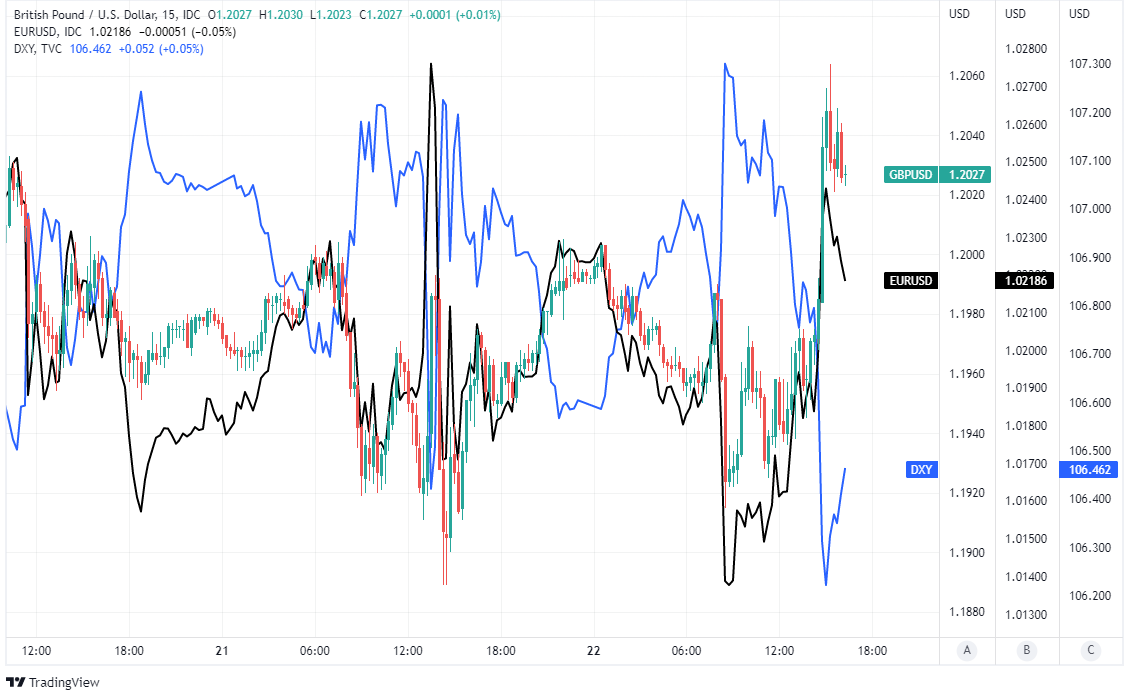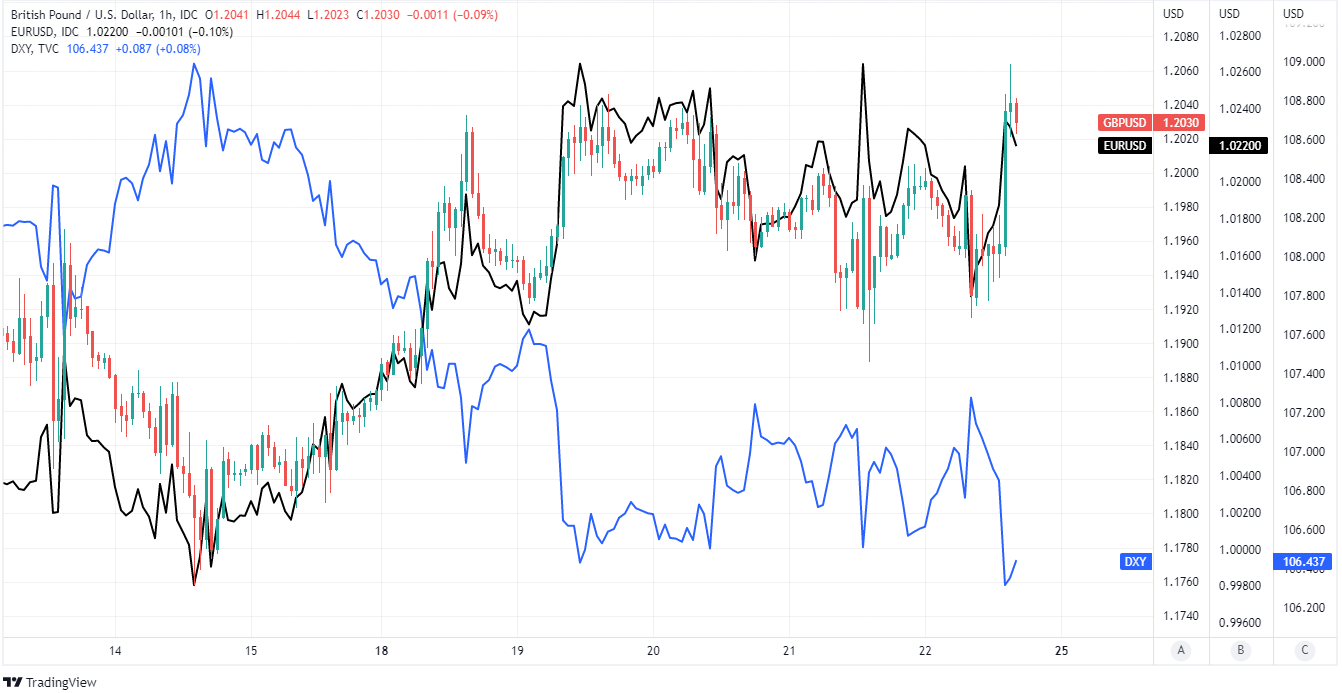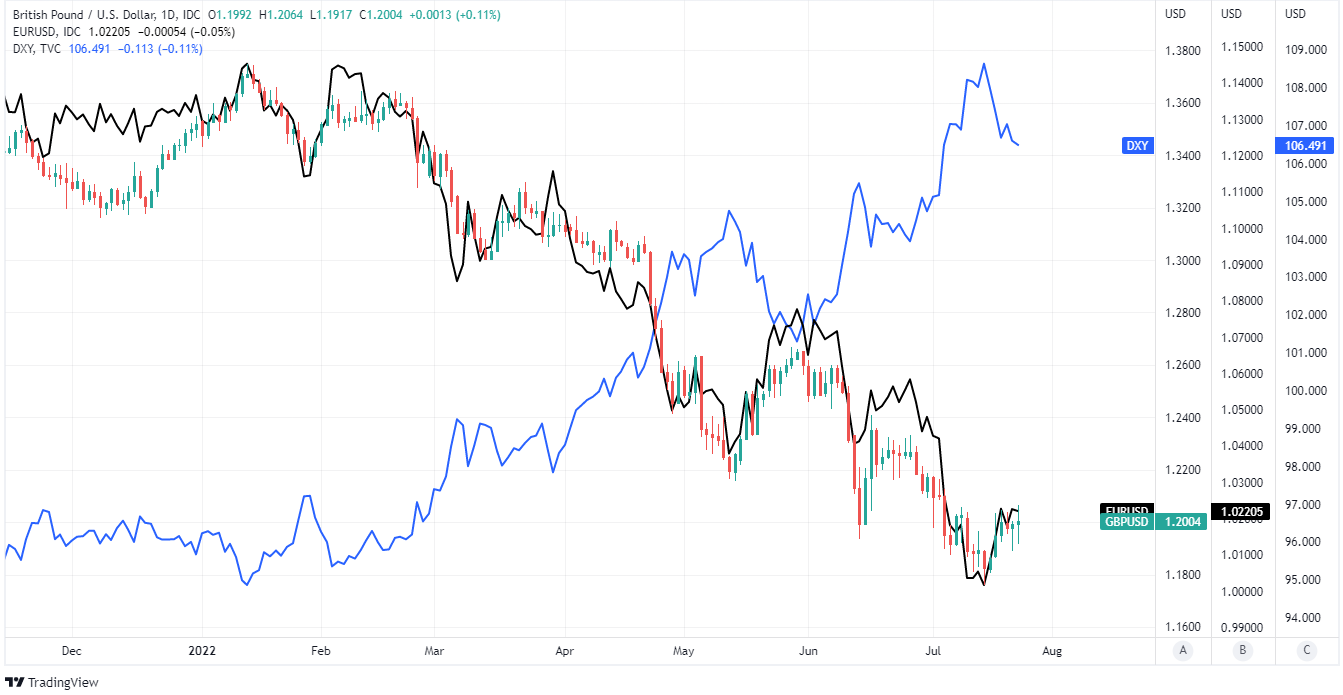Pound-Dollar Recovers 1.20 after Grim Business Surveys Burden USD
- Written by: James Skinner
-

Image © Adobe Images
The Pound to Dollar exchange rate reclaimed the 1.20 handle again in the final session of the week after the latest U.S. business surveys appeared to give European counterparts a run for their money on the downside, sending U.S. Dollar exchange rates lower ahead of the weekend.
Sterling made several attempts at recovering 1.20 against the greenback this week and was unable to hold that higher ground for very long on each occasion but the Pound to Dollar rate was given another opportunity on Friday.
This was after S&P Global's PMI surveys of the U.S. manufacturing and services sectors surprised on the downside of economist expectations and significantly so in relation to the all-important services industry, which appeared to fare even more poorly than Europe's equally significant manufacturers in July.
"Excluding pandemic lockdown months, output is falling at a rate not seen since 2009 amid the global financial crisis, with the survey data indicative of GDP falling at an annualised rate of approximately 1%," says Chris Williamson, chief business economist at S&P Global Market Intelligence.
Above: Pound to Dollar rate shown at 15-minute intervals alongside EUR/USD and U.S. Dollar Index.
The purchasing managers' index for the dominant U.S. services sector signalled the sharpest fall in output from that part of the economy since May 2020 with a 5.7 point decline that was far larger than anything seen in the equivalent European surveys on Friday morning.
"The survey data is bad! US and European PMIs overnight along with Philly Fed yesterday show a business community that now expects the worst," says Brent Donnelly, president at Spectra Markets and a veteran currency trader.
"With global soft data moving uniformly and rapidly weaker, the base case has to be that US employment and inflation is about to turn aggressively weak," Donnelly said on Friday.
Strength in the economy has been one of two significant drivers of U.S. inflation and the aggressive interest rate stance adopted by the Federal Reserve as a result, which was the catalyst behind the Dollar's sharp rally against all currencies during recent months.
Above: Pound to Dollar rate shown at hourly intervals alongside EUR/USD and U.S. Dollar Index.
Moderating the economy's strength is the only way in which any central bank could hope to bring inflation back down to more desirable levels and this is a task that has generally been left to them by governments.
"While the June CPI inflation report did surprise expectations to the upside, the recent retreat in energy prices augurs for a less bad CPI print for July. In addition, inflation expectations have softened since the June scare," says Mazen Issa, a senior FX strategist at TD Securities.
"This Fed meeting does not carry nearly the same amount of weight as the last two. And, despite the hottest CPI report yet, Fed officials have pushed back on the need to up the ante with a 100bp hike," Issa also said on Friday.
The Fed will announce its latest policy decision next Wednesday and has recently set itself on a course intended to lift interest rates to a "moderately restrictive level" somewhere between 3% and 3.5% by year-end.
Above: Pound to Dollar rate shown at daily intervals alongside EUR/USD and U.S. Dollar Index.
Friday's business surveys are just the latest indication that the Fed may be having some early success in its bid to pull economic demand down into a better perceived balance with the reduced supply of internationally traded goods and commodities like fuels and foods.
"This is not noise. Existing single-family home sales have dropped by 21% from their January peak, and the number of homes for sale has rocketed by 40% in just four months; that’s a 174% annualized increase," says Ian Shepherdson, chief economist at Pantheon Macroeconomics.
"Chair Powell and his colleagues will have to acknowledge that the market is in meltdown, and that will make it harder for them to maintain the pace of tightening currently expected by markets," Shepherdson said of Wednesday's National Association of Realtors existing home sales data for June.
Other indications have included tumbling home sales that are incongruous with the numbers of properties coming onto the market, although not all data from the U.S. has been grim and some of it has remained robust including employment indicators like the monthly non-farm payrolls report.
"While Initial [unemployment] Claims tick higher, the hard data is still relatively robust. It is not unusual for hard and soft data to diverge," Spectra Markets' Donnelly noted on Friday after warning that soft data like business surveys can often be a better predictor of twists and turns in the economic cycle.














